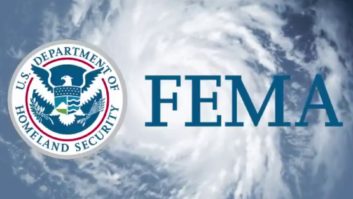Warren Shulz’s guest commentary (“It’s Broke; Stop Trying to Fix It”) was long overdue. The points needed to be made. However, the reason why EAS is broken is because FEMA itself is broken. It has lost its edge in hiring and retaining experts in the fields of emergency communications, EAS and public warning.
While FEMA may repudiate my accusations, the facts are clear: It has walked away from the broadcast station protection program, the EMP protection and maintenance program, the warning siren program and the Radio Amateur Civil Emergency Service. Particularly in FEMA Region II, people who had actual communications and broadcast expertise have retired and been replaced by specialists who are nothing more than IT geeks.
When it comes to EAS, no broadcaster, cable operator or state OEM likes or wants to be bullied into compliance on a program that even its governing agency doesn’t care about or have its heart in. In my 28 years with New Jersey OEM, I could see this deterioration and lackluster response. Another lesser-known example is the Cold War-era National Warning System (NAWAS).
Ever since the threat of a Soviet missile attack lessened and the National Warning Center moved out of the NORAD facility, America has gotten complacent and nonchalant about other kinds of attacks and disasters. During 9/11, I was in my office at the NJ State EOC, and was aghast that the national NAWAS circuit remained silent the entire morning.
The very system intended for when we’re under attack was not used by FEMA (or anybody else) on that fateful morning.
I also agree with Mr. Schulz that the national EAS test, while sorely needed, was a dismal technical failure. Whatever happened to the dedicated and hardened telephone circuits that used to feed each PEP station? In an actual emergency, who has time to set up a telephone conference bridge from FEMA HQ to all the constituent stations?
I also agree with Mr. Schulz that since practically everything runs on the Internet now, hacking into EAS can be accomplished at any level. Even more disturbing is that one of my EAS partners here in New Jersey has suffered several IP attacks in which one of his satellite transmitters was taken off the air numerous times by a hacker.
What good is EAS if some psycho or junior high school kid can shut your transmitter off?
Americans have become too naive and complacent about the Internet. As a cost saving effort, many have discontinued their copper telephone service (POTS) in favor of the cellphone. Nothing could be more foolish.
Haven’t we learned our lesson after suffering the various infrastructure failures during 9/11, Katrina and most recently Hurricane Sandy? The traditional over-the-air delivery system, as Mr. Schulz points out, is slowly becoming obsolete — not because of technology, but because of subtle marketing efforts to make it so. He mentions replacing car radios with WiFi hotspot receivers. How incredibly foolish is that?
Sadly, the public swallows this up like lemmings going over a cliff. As long as the glitz and “wow factor” are waved around, the public will buy into anything. Wasn’t P.T. Barnum right?
Robert Schroeder
President
Adroit Consulting
Ewing, N.J.











